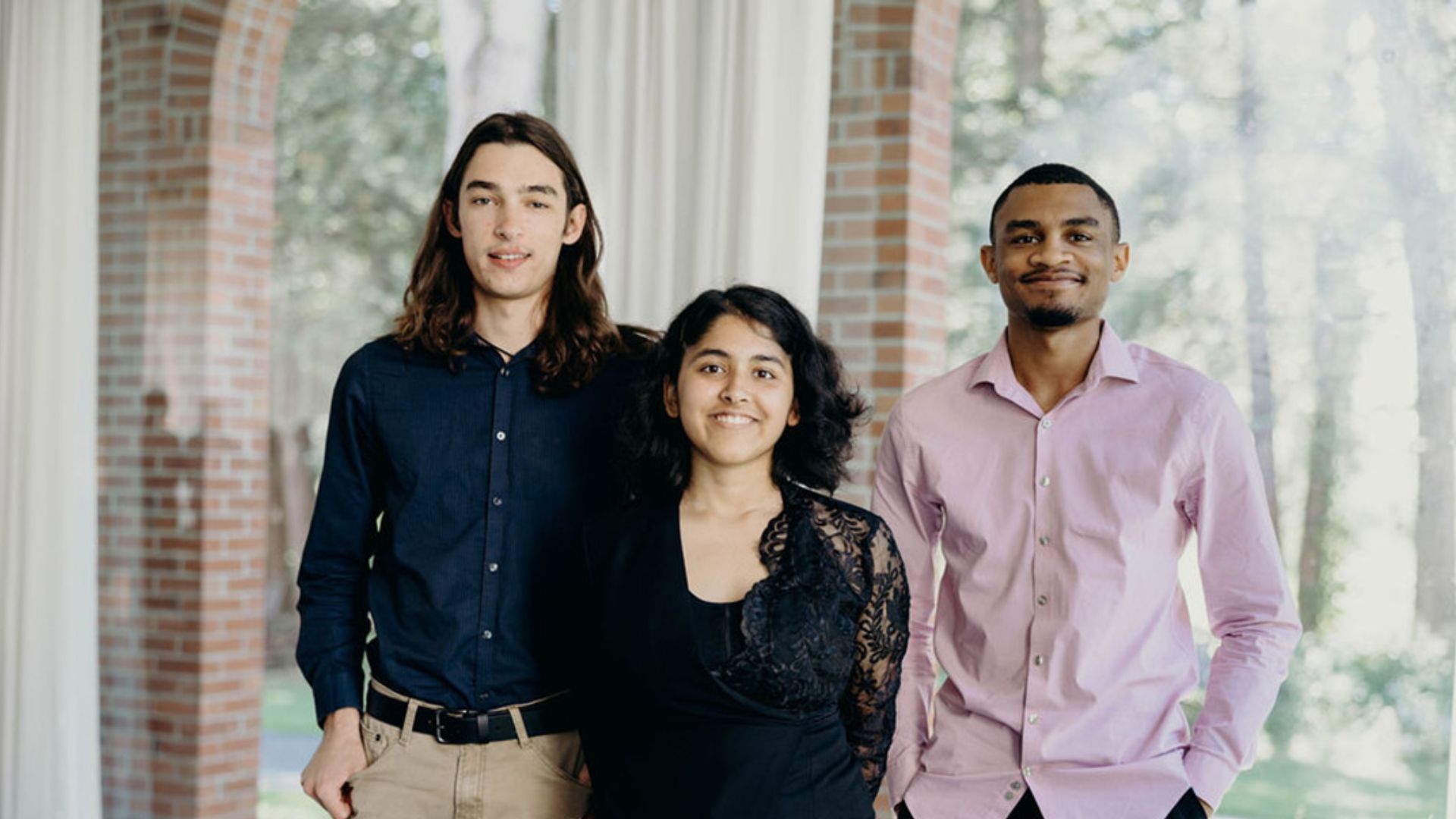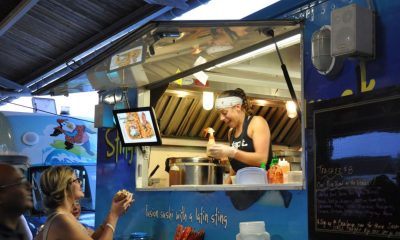Local News
RIT gap year fellows find their innovator groove as they transform bold ideas into real world projects with support from mentors and funding

Rochester, New York – For some college students, taking a year away from the classroom can feel risky. At Rochester Institute of Technology, however, a unique fellowship is showing that time away from coursework can be exactly what young innovators need to bring their visions to life. The Gap Year Entrepreneurship Fellowship Program, now in its seventh year, is providing financial support and mentoring to students who want to test, build, and refine their business ideas before graduation.
This year’s cohort features four fellows from RIT’s School of Individualized Study (SOIS): Jonathan Bateman, Aidan Makinster, Michael Norton, and Hridiza Roy. Each received a $20,000 stipend to sustain their projects over two semesters, as well as access to coaching from the Simone Center for Innovation and Entrepreneurship and networking support through Upstate Venture Connect. Their work spans a wide range of disciplines—from cybersecurity tools to underwater drones to bike technology and 3D animation software—yet all are tied together by a common desire to invent and make an impact.
The fellowship traces back to RIT alumnus and trustee Austin McChord, who created the program in 2017 as part of a transformative gift to the university. The initiative officially launched in 2018 with a single student, and since then, 28 fellows have pursued entrepreneurial goals through the program. McChord himself is no stranger to the entrepreneurial journey. He founded Datto, a data protection company, while still a student at RIT, eventually selling it for roughly $1.5 billion. Today, he leads Casana, a healthcare technology firm.
“Gap year fellows enjoy a rare opportunity to present their ventures directly to Austin, gaining thoughtful, actionable feedback on their biggest challenges, growth strategies, and next steps,” said Meg Walbaum, director of Strategic Partnerships in University Studies. “The experience leaves a lasting impact, shaping both their businesses and their personal development.”
Battling Deepfakes With Smarter Security
Jonathan Bateman, a third-year student from Denver, has been drawn to both the technical and social sides of technology. His academic path weaves together applied mathematics and computing security with anthropology and sociology, an unusual combination that reflects his interest in how people interact with digital tools. That interdisciplinary focus is now helping him develop an app designed to protect against one of today’s most troubling cybersecurity threats: deepfake impersonations.
His startup project, Real Recognizes Real AI (realxreal.ai), is a mobile app that authenticates the identities of one’s closest contacts in the event of a targeted attack. Unlike typical commercial authentication systems, the app emphasizes personal trust by using multifactor verification tailored to individuals.
“I want to prioritize security, privacy, and ethics,” Bateman said. “It’s not a hindrance to innovation.”
Bateman hopes to have the app ready for launch in Apple’s app store by the end of the year, a timeline that shows how quickly the fellowship can accelerate a student’s idea from concept to potential product.
Drones Shaped Like Water Bottles
For Michael Norton, who hails from Long Island, the fellowship is an opportunity to combine a love of engineering with a fascination for exploration. He tested out several majors before landing in SOIS, which gave him the flexibility to merge different engineering interests into one degree path. Through the fellowship, he is channeling that curiosity into the creation of underwater drones.
The drones are not the bulky machines often seen in research labs. Instead, Norton’s models are compact and shaped like water bottles, designed to be built with 3D printing and guided by open-source software. His company, RocIn Industries LLC, will manage the development of this new fleet of devices.
Although he works mostly on his own, Norton doesn’t create in isolation. He runs ideas past “Brutus,” a chatbot he customized from an open-source artificial intelligence model. The tool is intentionally closed, accessible only to him, and serves as a sounding board for refining concepts.
“I’m a thinker and an ideas guy,” Norton said. “I have a passion for engineering and engineering work. My life goal is to be a successful engineer.”
Innovation On Two Wheels
Another fellow, Aidan Makinster from Waterloo, New York, is blending his mechanical skills with a lifelong passion for cycling. His project began as a capstone assignment but quickly evolved into something more: a prototype for an adjustable handlebar stem that can shift positions as riders move from climbing to descending. The ability to change handlebar placement mid-ride could add “ease, speed, and safety,” according to Makinster.
Using 3D-printed parts and different mechanical systems, he is working toward a final design. He hopes to have a functional prototype by mid-spring. For him, the project also connects to a childhood dream of selling bike parts under his own brand.
“My childhood dream is to open a store and sell bike parts,” Makinster said. “That was always my end goal.”
The fellowship’s support has given him room to experiment and plan for that future, including an additional $20,000 enhancement award that will help sustain his momentum.
Bringing Style To Animation
While some fellows are focused on physical devices, Hridiza Roy is diving deeper into the world of digital art. Her project centers on making it easier for animators to create painterly, stylized effects in 3D digital animation.
Roy has assembled a small team that includes Charlie Blaker, a third-year RIT 3D digital design student, and Jinhyo Huh, a graduate student at Stanford University. Together, they are reviewing existing research, exploring algorithms, and talking with professional artists to understand what kinds of tools would be most useful in practice.
Her fascination with animation goes beyond artistic flair—she studies the mathematics and computer science that underpin digital graphics. The tool she is developing streamlines the process of creating brushstroke-like textures on 3D objects, eliminating the need to juggle multiple applications.
“I wanted to create something that automates a stylized look while also giving artists control, and I have been able to explore both the algorithmic and the human side of that space,” Roy said. “The gap year fellowship is an absolutely amazing program. I have gotten the opportunity to research the mathematics of stylized looks within 3D animation, and gained extremely valuable insights from and connected with a lot of 3D artists.”
Roy will present her work to a wider audience at LightBox Expo in Pasadena, California, a major industry event, where she hopes to gain more feedback from professionals.
Building A Culture Of Entrepreneurship
The gap year fellowship has grown steadily since its founding, proving that structured support during college can give students the confidence to chase ambitious projects. By combining stipends with mentorship and networking, the program reduces the financial risk of pursuing entrepreneurship while encouraging creative problem-solving.
The fellows are not only gaining real-world experience but also setting examples for their peers. Their projects reflect pressing issues in today’s society—privacy and cybersecurity, the need for sustainable exploration tools, innovations in recreation, and new forms of creative expression. By working at these intersections, they highlight the adaptability that modern entrepreneurs need to succeed.
The fellowship also links back to a broader vision of RIT as a university where applied creativity thrives. With McChord’s backing and the guidance of mentors, students are encouraged to think like founders even before graduation.
As Walbaum noted, the impact extends beyond the projects themselves. “The experience leaves a lasting impact, shaping both their businesses and their personal development.”
For Bateman, Makinster, Norton, and Roy, the year ahead will be filled with prototypes, presentations, and plenty of trial and error. But thanks to the Gap Year Entrepreneurship Fellowship, they are not tackling those challenges alone. Their journey demonstrates that innovation does not have to wait until after graduation—it can start right now, with the right support, resources, and determination.

-

 Local News10 months ago
Local News10 months agoNew ALDI store close to Rochester to begin construction in late 2025 or early 2026
-

 Local News10 months ago
Local News10 months agoRochester Lilac Festival announces exciting 127th edition headliners
-

 Local News8 months ago
Local News8 months agoCounty Executive Adam Bello and members of the county legislature celebrate exceptional young leaders and advocates at the 2025 Monroe County Youth Awards
-

 Local News7 months ago
Local News7 months agoThe 2025 Public Market Food Truck Rodeo series will begin this Wednesday with live music by the Royal Bromleys